Once the calendar flips from October to November, life starts to get busy ‒ fast. There'll be presents to wrap, gatherings to attend, dinners to make...in fact, things probably won't slow back down until next year!
Needless to say, furnace trouble is the last thing you want to be dealing with over the busy holidays. Unfortunately, that's exactly when trouble tends to call! You'd hate to be scrambling to stay warm, and keep your pipes from freezing on top of everything else.
The good news is that most common winter HVAC issues are preventable! All it takes are a few simple, proactive steps to get your home ready for winter. With a bit of help, you can get these jobs done and keep your home cozy in no time!
1. Check Your Furnace
First thing's first: head down to the basement and give your furnace a good, old-fashioned inspection! Here are a few things you can safely do on your own before your annual furnace tune-up.
- Tidy up around the furnace. It's generally recommended to leave at least 3 feet of clearance around the unit, so put away any boxes or other odds and ends that were stored there over the summer. This will also make it easier for your HVAC technician inspect and service the furnace later!
- Make sure your humidifier is set up for winter. Turn the water on for the humidifer and open the bypass damper if there is one. The damper is labelled either summer/winter or open/close.
- Pay attention to sounds and smells. You know how your car sounds when something is wrong? Your furnace can also give audible warning signs. Be on alert for odd smells as well, especially the telltale "rotten egg" odour of gas.
2. Replace the Furnace Filter
Furnace filters remove particulates like dust, pollen and fibres from the air moving through your heating system. A dirty air filter restricts airflow and forces the furnace to work harder, thus consuming more energy and putting more strain on the unit.
- Replace the filter now! Your furnace's 1" filter should be replaced at least every 3 months during the heating season. Starting off with a clean filter means you won't have to remember to replace it again until next year.
- Consider an upgrade for cleaner air. The Minimum Efficiency Reporting Value or MERV rating tells you how well a filter removes various particulates from the air. Filters with a MERV rating of 9 to 12 will capture 95% of airborne pollutants like bacteria, dust and smoke. Just be sure your furnace is equipped to handle a filter with a higher MERV rating! These quite often require alterations to your existing ductwork.
3. Clean Your Air Vents
Any dust, lint or other "fuzz" that has accumulated on the vent over the summer will reduce the flow of air.
- Check and clean the supply and return air vents around your home. Don't forget spare bedrooms and bathrooms.
- Make sure there's space for air to flow. This is also a good time to make sure that none of these vents are blocked by furniture, area rugs or other objects.
- Consider having your ducts cleaned. If you want to keep your ducts as tidy as possible, we generally recommend having a professional duct cleaning about every 3 years. You should have your ducts cleaned sooner if you notice excessive dust, restricted airflow, mould, odours or other signs that something's wrong.
4. Test Your Thermostat
Your heating system can't do its job if your thermostat isn't working correctly! Many problems you'd assume are caused by your furnace actually originate with your thermostat. You might not have thought much about it over the summer, but now is definitely a good time to make sure your thermostat is doing its job.
- Try adjusting the temperature a few degrees above or below room temperature and see how long it takes to adjust.
- Check your thermostat's programming throughout the day on a less busy day. Is it adjusting the temperature on schedule?
- Consider a thermostat upgrade. If you find all these adjustments to be a hassle, you're not alone.
5. Watch the Humidity
Dry air is one of the most common discomforts in the home during winter. If your home doesn't have a whole-house humidifier, you might start to notice a few of these signs!
- Count the number of static shocks you get. Since dry air acts as an insulator, static electricity can easily build up to a nasty shock in the winter. If you're noticing it more than usual, your humidity is definitely on the low side.
- Notice chapped lips, cracked knuckles, and itchy, flaking skin. This prevalent winter problem is in part due to the dry air outside and the low-humidity, heated air indoors. Adding a humidifier to your home can help.
- Look for moisture on the inside of your windows. This could be a sign of the opposite problem: poor ventilation causing excess humidity to build up in your home. Call a home comfort specialist before the problem leads to mould.
Get Ahead of Winter
There's still time to get the job done and make sure your home is protected! Call us at 647-931-2917 or contact us online to book your seasonal furnace tune-up in the Greater Toronto Area today.







